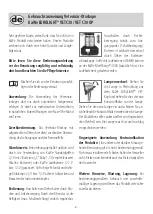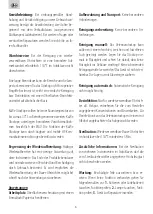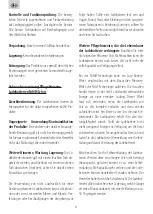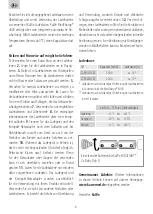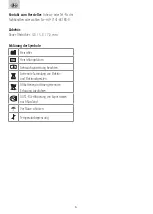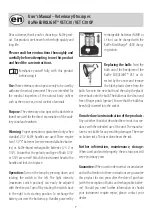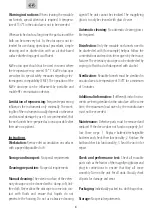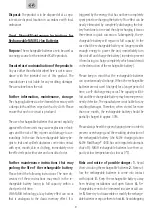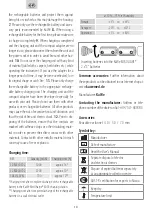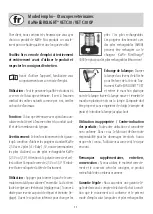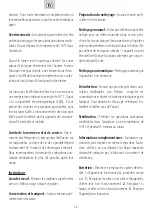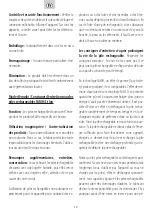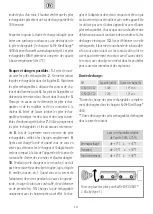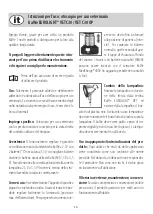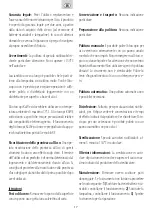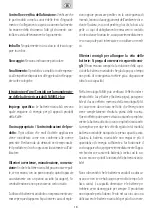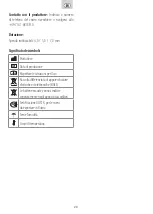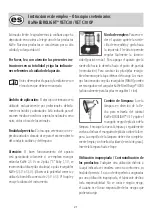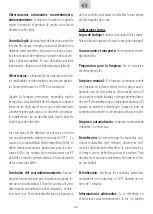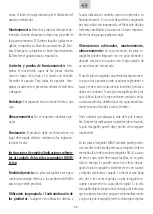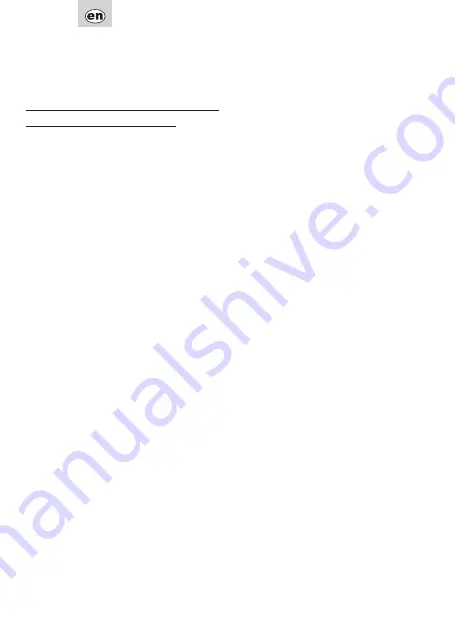
9
Disposal:
The product is to be disposed of at a sepa-
rate waste disposal location in accordance with local
ordinances.
User’s Manual/Maintenance Instructions for
Rechargeable NiMH/Li-Ion Batteries
Purpose:
The rechargeable batteries are to be used as
an energy source for the intended KaWe products.
Unsuited use/contraindication of the products:
Any use other than that described here is not in accor-
dance with the intended use of this product. The
manufacturer is not liable for any resulting damages.
The user alone bears the risk.
Further information, maintenance, storage:
The charging batteries can be cleaned if necessary with
a damp cloth and then wiped with a dry cloth. Please
ensure that no short-circuit is produced.
The use of rechargeable batteries that are not explicitly
approved for these units may cause explosions or leak-
ages and the risk of fire, injuries and damage to sur-
roundings. In the case that a rechargeable battery be-
gins to leak and spilled substances come into contact
with eyes, mouth, skin or clothing, immediately rinse
the effected spot with water and consult a doctor.
Further maintenance instructions that may
prolong the life of the rechargeable battery
:
Please heed the following instructions: The non-ob-
servance of these instructions may result in the re-
chargeable battery losing its full capacity within a
short period of time.
With NiMH technology, a lazy battery effect can occur
that is analogous to the classic memory effect. It is
triggered by the energy that has not been completely
spent prior to recharging the battery. This effect can be
nearly eliminated by completely discharging the bat-
tery from time to time and then by recharging it two or
three times in quick succession. Subsequently, the re-
chargeable battery will regain its full capacity. In the
case that the rechargeable battery no longer provides
enough energy to power the unit, immediately turn
the unit off and charge the battery (in order to prevent
it from losing its charge completely which would result
in the destruction of the rechargeable battery).
Please keep in mind that the rechargeable batteries
can spontaneously discharge. When the rechargeable
batteries are not used (charged) for a longer period of
time, a self-discharge may occur. The capacity will be
lost and the rechargeable battery may become perma-
nently defective. The manufacturer is not liable for any
resulting damages. Therefore, when stored for more
than one month, the rechargeable battery should be
partially charged to approx. 50%.
Please always heed the given charging time in order to
prevent overcharging and the resulting destruction of
the rechargeable battery (the KaWe charging station
KaWe MedCharge® 4000 has an integrated automatic
shut-off). NiMH rechargeable batteries lose their ca-
pacity at low temperatures (as low as 0°C).
Risks and notice of possible danger: 1.
Avoid
short-circuiting the rechargeable batteries.
2.
Never al-
low the rechargeable batteries to come into contact
with liquids.
3.
Keep the rechargeable battery away
from heating installations and open flames.
4.
Re-
chargeable are not to be immersed in water or salt wa-
ter
5.
Never try to disassemble or modify the recharge-
able batteries or expose them to heat.
6.
Avoid dropping


